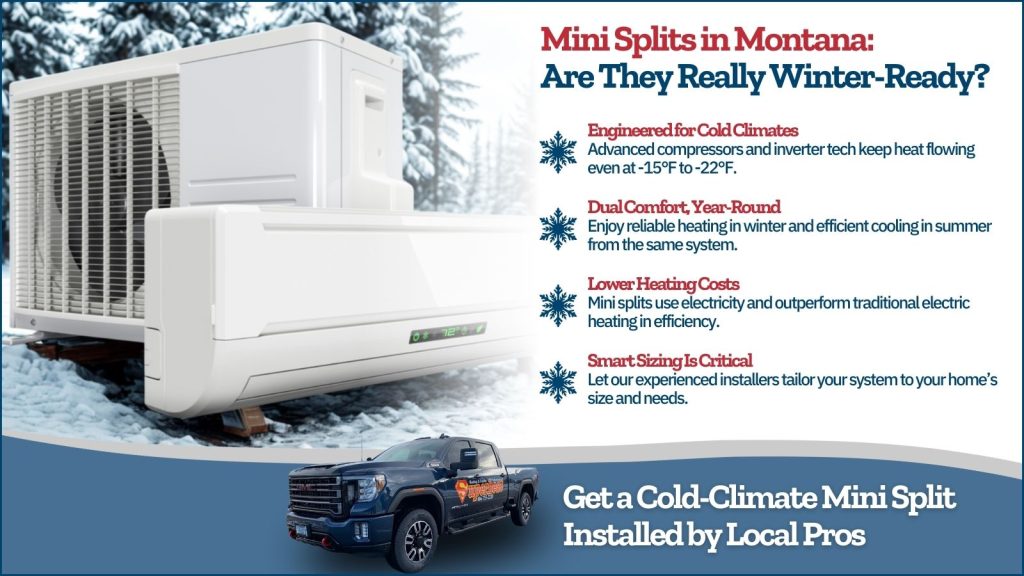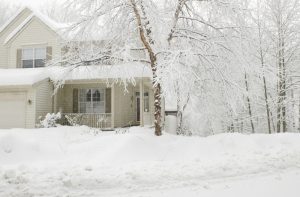If you live in Montana, you know just how brutal winters can be. With temperatures regularly dipping below zero and snow piling up for months, heating your home efficiently and reliably is essential. But you’ve probably heard people talking about heat pump mini splits in Kalispell, MT. Many homeowners are asking the question: Can mini split systems handle the cold Montana winters? The short answer is yes—but with the right setup. Let’s break it down.

What Is a Mini Split?
A mini split, or ductless heat pump, is a heating and cooling system that doesn’t rely on traditional ductwork. Instead, it uses an outdoor compressor unit and one or more indoor air-handling units. These systems are popular for their energy efficiency, flexible zoning, and quiet operation.
Traditionally, heat pumps struggled in extreme cold because their efficiency drops as temperatures plummet. However, modern mini splits have come a long way.
Cold-Climate Mini Splits Are Built for Winter
Manufacturers like Mitsubishi, Fujitsu, and Daikin have developed cold-climate mini splits specifically engineered for places like Montana. These advanced systems can operate in temperatures as low as -15°F to -22°F—sometimes even lower, depending on the model.
They achieve this through enhanced compressor technology and inverter-driven performance, allowing the unit to ramp up or down based on demand. This means they don’t just work in the cold—they thrive in it, providing consistent, reliable heat even during deep freezes.
Efficiency and Cost Savings
One of the main reasons homeowners switch to mini splits is the energy efficiency. These systems use electricity instead of fossil fuels and are significantly more efficient than traditional electric resistance heating. In Montana, where heating is a major part of the utility bill, switching to a cold-climate mini split can mean serious savings.
Installation Considerations
To get the best performance out of your mini split during Montana winters, it’s crucial to work with a contractor experienced in cold-climate installations. Proper sizing, placement, and insulation all play key roles in how well the system performs.
Some homes use mini splits as a primary heat source, while others use them in tandem with a backup system like a gas furnace or wood stove. Either approach can work—it all depends on your home’s size, layout, and existing infrastructure.
Final Verdict
Yes, mini splits can handle the cold Montana winters—but not all models are created equal. If you’re considering one, make sure it’s rated for low temperatures and installed by a professional who understands the local climate—like our expert team.
With the right system, you’ll enjoy cozy, efficient heat all winter long, without the need for ductwork or noisy furnaces. And when summer rolls around, your mini split will keep you cool too—making it a smart year-round investment.
For all of your HVAC needs, contact Bill’s Superheat, Inc. today! Here to Save the Day!


